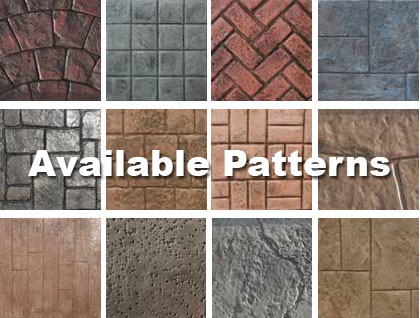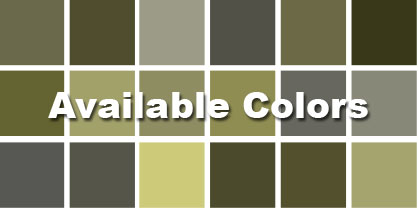powered by
Socialbar
Socialbar




Stamped concrete is the concrete representation of natural hardscape materials such as stone, brick, cobblestones, slate, etc. The concrete is imprinted onto the concrete by using rubber molds and a hand tamper. There are various molds that produce different patterns. For added natural effect, stamped concrete also uses concrete colors to enhance the realism of pattern.
Preparation for a stamped concrete slab is very similar to the preparation of a typical concrete slab. However the differences start when the concrete arrives to the site.
UCS uses uniform non-fading colors by Butterfield Color™ which are guaranteed by the manufacturer not to fade. Colors may appear "faded" over time but simply apply a coat of sealant and watch the colors come back to life. Resealing colored concrete is often compared to waxing an old car by comparison resealing colored concrete equally restores the original color the concrete.
The ultimate goal of any stamped concrete project is to obtain a natural final result, hence color selections are critical to a successful stamped concrete project. Based on the experience of UCS, it is recommended to choose the color selection in one of two ways.
For more information on stamped concrete colors check out the color charts page.
Stamped concrete can be up to 40% cheaper in up-front cost when compared to its natural counterpart. In the Chicago area, stamped concrete is very competitive in price with concrete pavers such as Unilock™ and Belgard™. However, unlike pavers, stamped concrete requires less maintenance which makes the cost of owning stamped concrete more economic in the long run compared to concrete pavers.
It is the beauty of stamped concrete with a low up-front cost and low maintenance which makes stamped concrete the more sensible choice for many.
To keep stamped concrete looking good, there are two things to keep in mind. Add a coat of sealant at the end of every other year to help retain the concrete colors looking like new and to protect against freeze-thaw cycles. Apart from the the sealing, there is also re-antiquing which is estimated to be done every 10-15 years a process which can be done at the time of resealing.
Compared to other outdoor hardscape systems, maintenance on stamped concrete is minimal. Compared to paver systems and brick installations, there is no need to worry about weeds growing between pavers, pesky edging strips becoming undone, pavers shifting with freeze-thaw cycles or bringing in loose sand into your house. These unwanted occurrences often require expensive maintenance such as repaving, regrouting and reinstallation.
Traction on stamped concrete can vary from pattern to pattern. Patterns that have less depth and texture are prone to having less traction. Thankfully with every new installation of stamped concrete, UCS offers a standard anti-slip coating of Shark Grip™. Shark Grip™ is a micro-polymer sealer additive that has the consistency of a very fine sand. The fine additive is mixed into the sealant to provide a consistent slip resistant surface. It is recommended that stamped concrete be sealed with Shark Grip™ in future resealing.
UCS takes concrete cracking and chipping very seriously. It precisely for that reason that UCS takes no shortcut but to provide you with quality products with skilled labor to ensure a quality concrete flatwork. All outdoor concrete flatwork starts out with a high quality 6 bag concrete mix rated at 4,000 PSI with 6% Air Entrainment. Embedded within the concrete is also a 10 gauge 6"x6" wire mesh to add tensile strength to the concrete. Concrete patios are also pinned to the foundation to prevent the concrete from sinking in the future.
Like most concrete slabs, stamped concrete slabs need to have control joints. Control joints are the grooves that you see on sidewalks and other concrete slabs. The purpose of a control joint is to "control" the cracking when the concrete cracks. Control joints are spaced strategically every 8 to 12 feet apart as well as anywhere there is a change in mass or a sharp corner. Stamped concrete control joints are cut in with a concrete saw as opposed to tool made control joints. By cutting the control joints as rather than hand tooling them in they are less noticeable and don't detract attention from the stamped concrete.
Last but not least, for added protection, UCS adds two complimentary coats of sealant on every installation of stamped concrete. The first layer of sealant penetrates the pores of the concrete making it difficult for water to seep into the pores. The second coat of sealant acts as an additional protective barrier as well as a color enhancer.
The use of any type of salt during the first winter is highly discouraged. For traction on a driveways, we recommend that you use sand which you can can purchase at your neighborhood home improvement store. After the initial winter, we recommend that you use normal rock salt. Also DO NOT allow excess snow and ice accumulate concrete surfaces because it is known to increase the chances of concrete chipping at the surface.
A typical concrete patio takes 3-5 days to install. On the first day, the patio area is excavated and formed. The second day, a city inspector stops to approve the pour. On the third day, concrete is poured and finished. On the fourth day, the forms are stripped and the patio is sealed. An extra day is allotted for any delays.